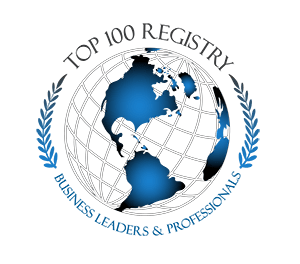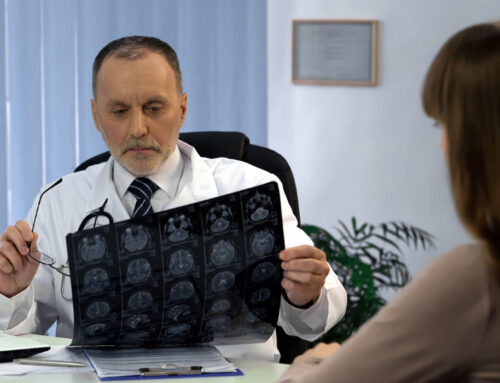Facial twitching is a phenomenon characterized by involuntary muscle contractions in the face. While facial twitching is often harmless and temporary, it can sometimes indicate underlying issues related to brain health which can be a cause for concern. Delve into the fascinating connection between facial muscle twitching and brain health, and shed light on the potential causes, implications, and ways to support brain health to alleviate or prevent involuntary muscle contractions. By gaining a deeper understanding of muscle fatigue, nervous system disorders, nutritional deficiencies, medication side effects, and facial nerve irritation, you can take proactive steps towards treating a facial twitch.
Hemifacial Spasm Symptoms
Hemifacial spasm is a neurological condition characterized by involuntary muscle contractions on one side of the face. The most common symptom is repetitive facial twitching or spasms that typically begin around the eye or corner of the mouth and can spread to other areas on the affected side, such as the cheek, jaw, or neck. These spasms can be triggered by actions like talking, smiling, or eating. While hemifacial spasm is not usually associated with pain, the persistent contractions can cause discomfort, muscle fatigue, and emotional distress. If you experience these symptoms, it is important to consult with a healthcare professional for a proper evaluation and diagnosis.
Causes of Facial Twitching
1. Muscle Fatigue and Strain:
Muscle fatigue and strain results from prolonged physical exertion, excessive eye strain, or chronic stress, can lead to facial muscle twitching. When muscles are overworked or subjected to prolonged stress, they may not contract and relax efficiently, causing involuntary twitches or spasms.
This can occur in facial muscles due to their constant engagement in expressions and movements. While usually temporary and not serious, managing muscle fatigue and strain through rest, relaxation, stress management, and a balanced lifestyle is essential for supporting healthy muscle function and brain health!
2. Nervous System Disorders:
Conditions such as hemifacial spasm, a neurological disorder characterized by intermittent muscle contractions on one side of the face, can cause facial twitching. Hemifacial spasm arises from abnormal nerve impulses in the facial muscles, often due to compression or irritation of the facial nerve.
This disorder can be disruptive and significantly impact one’s quality of life. It is essential to consult with a healthcare professional for a comprehensive evaluation, accurate diagnosis, and appropriate management of nervous system disorders contributing to facial twitching.
Understanding the underlying neurological factors can guide targeted treatment approaches, which may include medication, physical therapy, or, in some cases, surgical intervention, to alleviate facial twitching and improve overall neurological function. Learn more about hemifacial spasms if you believe this is the cause of your facial spasm.
3. Nutritional Deficiencies:
Lack of essential minerals like magnesium or potassium in the body can result in muscle spasms, including those in the face. Magnesium is vital for proper muscle function and helps regulate muscle contractions. When magnesium levels are insufficient, muscles may become more prone to spasms and twitching.
Potassium also plays a crucial role in muscle contraction and nerve signaling. Insufficient potassium levels can disrupt the balance of electrolytes in the body, leading to muscle imbalances and involuntary contractions. Maintaining a balanced diet that includes foods rich in magnesium, such as leafy greens, nuts, and seeds, as well as potassium-rich foods like bananas, avocados, and potatoes, can help prevent nutritional deficiencies and support healthy muscle function.
- Medications and Stimulants:
Certain medications, such as those used to treat epilepsy or psychosis, may have twitching as a side effect. These medications can interfere with the normal functioning of neurotransmitters or affect nerve impulses, potentially leading to facial muscle spasms. It’s crucial to consult with a healthcare professional if you suspect that your medication is causing facial twitching.
Additionally, excessive caffeine or stimulant intake can also trigger facial muscle spasms. Caffeine and other stimulants can overstimulate the nervous system, leading to increased muscle excitability and potential twitching. Monitoring and moderating caffeine and stimulant consumption, as well as discussing any concerns about medication side effects with a healthcare professional, can help manage and reduce symptoms.
4. Facial Nerve Irritation:
Compression or irritation of the facial nerve, often caused by a blood vessel pressing against it, can result in facial twitching. The facial nerve is responsible for controlling the muscles of the face, and any disruption or interference with its normal function can lead to involuntary muscle contractions.
When a blood vessel comes into contact with or compresses the facial nerve, it can disrupt the transmission of nerve impulses and trigger facial twitching. This condition is known as a hemifacial spasm which typically affects one side of the face and can be characterized by intermittent or continuous muscle contractions. It is essential to consult with a healthcare professional if you experience persistent facial twitching or suspect facial nerve irritation. They can conduct an evaluation to identify the underlying cause and develop an appropriate treatment plan.
Treatment Options
Medications: Depending on the underlying cause, your healthcare provider may prescribe muscle relaxants, anticonvulsants, or botulinum toxin injections to alleviate facial twitching.
Lifestyle Changes: Managing stress levels, improving sleep patterns, and reducing caffeine intake can help reduce the frequency and intensity of facial muscle spasms.
Nutritional Supplements: If nutritional deficiencies are suspected, supplements containing magnesium, potassium, or other essential minerals may be recommended.
Surgery: In some cases, where other treatments have proven ineffective, surgical intervention may be considered. Hemifacial spasm, for example, can be treated through microvascular decompression surgery.
Conclusion
Facial twitching can be caused by a variety of factors, including muscle strain, nervous system disorders, and nutritional deficiencies. Identifying the underlying cause is crucial in determining the appropriate treatment approach. If you are experiencing persistent facial twitching, it is recommended to consult with a qualified healthcare professional, such as Robert Louis MD, a specialist in neurosurgery, at 949-383-4185. With his expertise in conditions like hemifacial spasm, you can receive an accurate diagnosis and a personalized treatment plan. With proper care and management, relief from facial twitching is attainable, allowing you to regain control and comfort in your daily life. Contact Robert Louis MD, your Orange County Neurosurgeon, to learn how to solve your hemifacial spasm today.



















